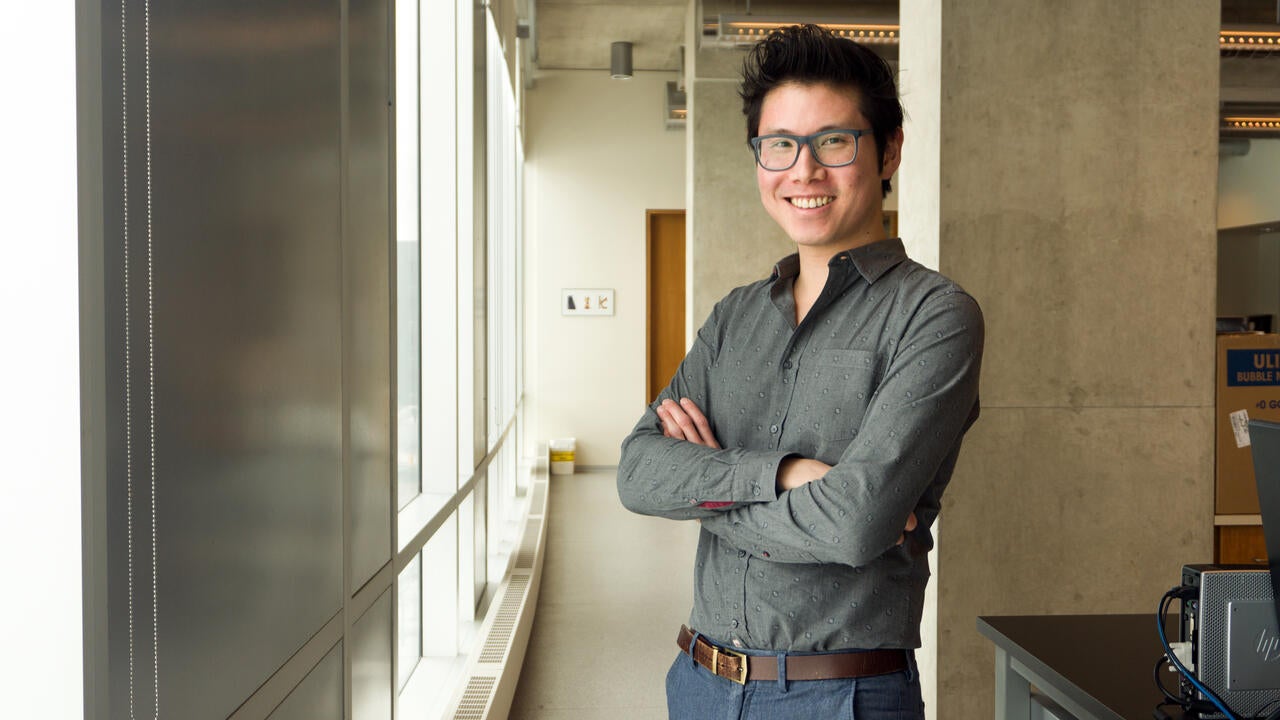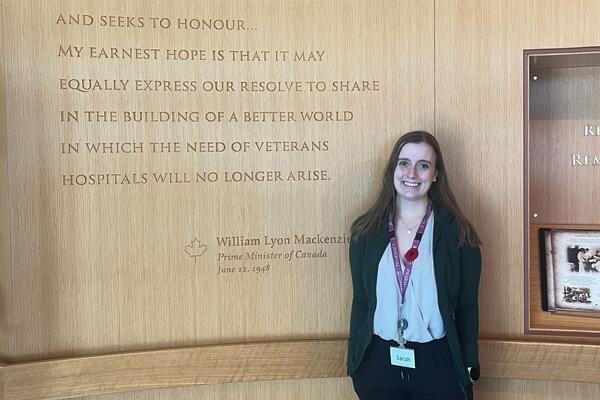
Storytelling improves patient care
When pharmacists listen closely to their patients, they can provide better treatment, says Jeff Wong (BScPhm ’11, PharmD ’16).

When pharmacists listen closely to their patients, they can provide better treatment, says Jeff Wong (BScPhm ’11, PharmD ’16).
By Robin Morden Office of AdvancementRecently, pharmacist Jeff Wong (BScPhm ’11, PharmD ’16) was explaining to a diabetic patient that diet and exercise were at the root of his illness. But he could sense the patient was disengaged, and he worried that he wasn’t getting the message.
Feeling that the conversation was going nowhere, Wong thought to flip the script. He asked the patient what he thought was to blame for his health problems.
The answer was surprising. The patient, who had recently moved to Canada from the Dominican Republic, told Wong that he was lonely. He missed his friends and family back home. This, not exercise or diet, was responsible for his illness.
Wong realized he could help the patient with his loneliness by connecting him with community services. If his loneliness could be remedied, perhaps he would be more likely to attend to other aspects of his health.
Dr. Wong is an advocate for narrative medicine, a medical philosophy that alters the way health-care practitioners interact with patients.
“The central idea is that we use the patient’s story to help us make clinical decisions,” says Wong.
Traditionally, pharmacists parse the patient’s story for causes and symptoms in order to determine a prescription. By contrast, narrative medicine asks health-care providers to acknowledge and engage with the patient’s experiences of illness in order to provide more lasting, effective treatment.

Jeff Wong (BScPhm ’11, PharmD ’16) shares insights with a Waterloo student.
Wong first turned to narrative medicine while practicing with a family health team in Hamilton. His adoption of narrative medicine was as much about “self-preservation” as patient care.
He was hearing stories of hurt and suffering on a daily basis, but had no method for processing the strong emotions they evoked. As a result, Wong had begun to experience burnout. He even found himself becoming “robotic” in his interactions with patients.
Narrative medicine provided Wong with an antidote to this malaise.
“It really helps with burnout because you stop seeing prescriptions as something that you just have to turn around,” says Wong. “It reminded me of why I got into the profession in the first place — to help people.”

These days, Wong is committed to advancing the practice of narrative medicine so that more patients and practitioners can benefit from its healing powers.
One of the ways in which he is helping spread the practice is by incorporating it into the pharmacy curriculum. He has taught courses on narrative medicine at the University of Waterloo’s School of Pharmacy in the past, and plans to bring them back next year. His mission is to tell the story of the person who is anxious or scared to go into the pharmacy.
“Maybe they’re nervous about the diagnosis, the medication, or even the interaction they’re about to have with a pharmacist,” he says. “I want to share that story with a broad audience. And I want pharmacists to recognize they have a lot of power and responsibility when responding to their patients’ stories.”

Read more
Shop Canadian this holiday season with festive porch plants, fashion-forward apparel, craft spirits and more from Waterloo entrepreneurs

Read more
Waterloo pharmacy alum and Sunnybrook Health Science Centre team deliver compassionate care to those who have served in the Canadian military

Read more
Waterloo welcomes 2,800 new graduates to its alumni club and celebrates their bold new journeys
The University of Waterloo acknowledges that much of our work takes place on the traditional territory of the Neutral, Anishinaabeg, and Haudenosaunee peoples. Our main campus is situated on the Haldimand Tract, the land granted to the Six Nations that includes six miles on each side of the Grand River. Our active work toward reconciliation takes place across our campuses through research, learning, teaching, and community building, and is co-ordinated within the Office of Indigenous Relations.